6 Graphics Cards with Luxury Trimmings
MSI Radeon HD 2900 XT

The powerful fan is quiet in Windows at 38 dB(A). Under 3D load, it spins up and reaches a loud 51.4 dB(A).
MSI's card sports 512 MB of DDR3 video memory. The Radeon HD 2900 XT chip is produced on an 80 nm process and supports DirectX 10. ATI specifies a power consumption of 225 watts and recommends a 500 W power supply with two PCI Express power cables.
ATI constantly optimizes and updates its drivers. The current Catalyst 7.10 suite was released three days after we completed our testing, which is why all the results were obtained using Catalyst 7.9. The optimizations and tweaks are paying off, as the Radeon HD 2900 XT is finally able to reach a level of performance similar to that of the Geforce 8800 GTS (320). In Windows XP, the performance delta between the two cards in cumulative frame rate is now less than 20 fps (Geforce 8800GTS 1878.9 fps, Radeon HD 2900 XT 1809.6 fps). In Windows Vista, ATI was able to increase the performance from the first driver release to Catalyst 7.9 by a good 5%.
The card offers sufficient performance for the current crop of games, even with anti-aliasing enabled. High resolutions such as 1920x1080 are also not a problem for the powerful Radeon HD 2900 XT. In games that combine HDR rendering with intensive pixel shader usage, such as Oblivion, in some cases you may need to disable shadows or turn down the graphics quality at resolutions of 1600x1200 or higher.
MSI's bundle is excellent. The card ships with a component output cable for HDTV, S-Video and composite cables, and a flexible Crossfire bridge. In addition to the DVI-VGA adapter, you'll also find a DVI-HDMI adapter for HD video and audio in the box. As a bonus, the bundle also includes the Black Box, which is a small card with a product key for the Steam versions of the games Half-Life 2 Episode 2, Portal and Team Fortress 2.
The design of the adapters for the PCI Express auxiliary power is pretty smart. In principle, the card needs two PCIe power connectors, the second of which uses eight pins instead of six. If you only connect two six-pin power cables, the card will run normally, but the driver disables the overclocking functions. In order to unlock the driver's overclocking feature, you need to use MSI's six-to-eight-pin power adapter.
Beware! Any overclocking experiments are entirely your own responsibility and will generally void your card's warranty.
Stay on the Cutting Edge
Join the experts who read Tom's Hardware for the inside track on enthusiast PC tech news — and have for over 25 years. We'll send breaking news and in-depth reviews of CPUs, GPUs, AI, maker hardware and more straight to your inbox.
At default speeds, MSI's Radeon HD 2900 XT runs at 743 MHz (GPU) and 828 MHz (memory). On the first try, the Catalyst driver's automatic clock speed detection routine crashed, freezing Windows in the process. After rebooting, the driver increased the CPU frequency to 858 MHz, the maximum setting, and the memory to 863 MHz. A quick 3D Mark 2006 run showed no artifacts, so we decided to manually crank the memory frequency to its maximum value of 900 MHz as well. Again, the benchmark ran without a hitch, completing flawlessly.
Overall, the card's temperatures stay within a rather small range. In 2D mode, the GPU idles at about 62°C. Under 3D load, the card quickly gets hotter, with the fan really spinning up between 71°C and 73° C and finally stabilizing the temperature at 82°C.
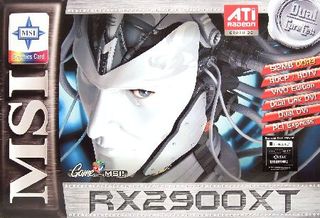
VIVO stands for Video-In and Video-Out.
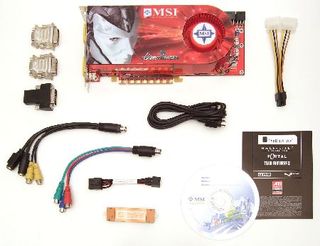
The bundle includes an HDMI adapter and a Crossfire bridge.

The backplane features two DVI ports and the ViVo connector.

The card uses a dual-slot cooling solution and is 9.5" (24.5 cm) long.
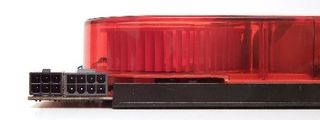
The Radeon HD 2900 XT can draw its power from two six-pin power cables.

An eight-pin power adapter cable is needed for overclocking.
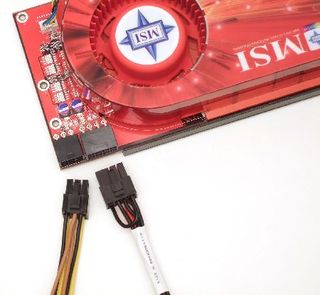
MSI's bundle includes the necessary six-to eight-pin power adapter.
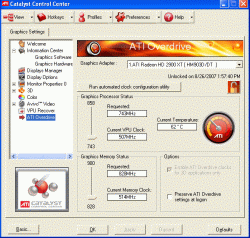
With the eight-pin power adapter attached, the overclocking section is enabled in the driver.

Our sample reached a maximum clock speed combination of 858 MHz (GPU) and 900 MHz (memory).
Current page: MSI Radeon HD 2900 XT
Prev Page VGA Makes Way For HDMI Next Page MSI Radeon HD 2900 XT CrossfireMost Popular

